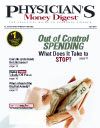Publication
Article
When Pessimism Prevails, It's Time to Buy!
Author(s):
When values abound and pessimism is rampant,what do most people do? They doone of two things: They either sell stocksor they refuse to add to their holdings. They let theiremotions, not facts and common sense, rule theirinvestment behavior. That's the simple reason mostindividuals do so poorly with their money.
Look at Trends of the Past
If history repeats itself, as it almost always does,there should be a sharp rise in stock prices from thelow point in 2006 into 2007 and perhaps into 2008as well. Going all the way back to 1914 and withoutexception, mid-term presidential-election years havebrought a wonderful buying opportunity for stocks.The average gain in the Dow from the low of themid-term year to the high the following year was anoutsized 54.3%.
The smallest gain recorded was 14.5% starting inOctober 1946; this was the only gain under 20%+.When you break down the gains per year from the1920s to the 1980s, the median gain has been somewherein the 50% range: 50.6% to 57.6%. Again,the resulting average is 54.3%. Thus, based on thehistoric record, there's a very high probability of anupward move in the 50% area from the low in 2006to the high in 2007-2008. Even since the end ofWorld War II, the average gain over the last 2 yearsof a presidential term has been 42%.
The Boom by Election Day
Investors Intelligence
This is not a forecast, but simply an observationconstructed from historic facts. Based on this evidence,the Dow will be at 16,000 or more by ElectionDay 2008. When pessimism is high and stocks sell atlow P/E ratio, it's always been a great time to load upon stocks, especially those offering superior valueswith above-average—and growing—dividends, thekind we invest in for our managed accounts. Thenumber of bearish investment-newsletter writers surveyedby recently climbedabove 36%, the highest level since the bear marketbottomed in October 2002. Said another way, the lasttime so-called investors had an outlook this bleak, theS&P 500 index had already slumped to a 5-year low.But immediately following, it took off into a new bullmarket. In fact, 2003 was the finest year for stocksover the past quarter century. Yet most investors wereso scared they missed some or all of it.
P/E ratios for both the Dow and S&P 500 are thelowest of the past 10 years, which includes the marketbottom in 2002's fourth quarter, following theworst bear market since the Great Depression. Stockswere very cheap then and by this measure evencheaper today. So what's the rub? Negativism iswidespread and growing. So, stocks could show a littlemore weakness or even pull an abrupt sell-off. Ifthat happens, don't let it throw you. It's just likecalm-air turbulence when you fly that comes out ofthe blue but doesn't represent anything threatening.
Just remember that history shows a great stock riseis on the horizon. Take maximum advantage of it.
Bill Staton, MBA, CFA, is chairman of Staton Financial Advisors LLCand is recognized by both Bloomberg and Financial Advisor magazineas one of "America's Top Money Managers," and his clientshave never had a down year. He invites Physician's Money Digestreaders to receive the next three issues of Statons' E-MoneyDigest/Guided Portfolio Service free by logging on to www.statoninstitute.com.He welcomes questions or comments at 704-365-2122 or bill@billstaton.com.
